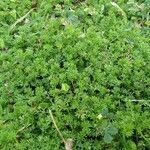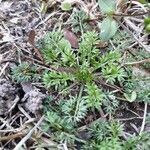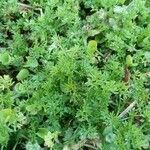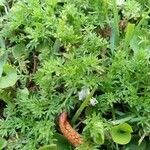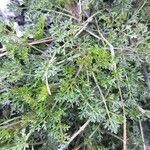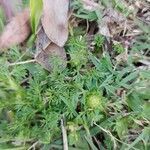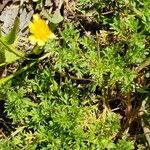Plants (1–)2–5(–25+) cm (high or across), ± villous, glabrescent (not stoloniferous, stems purplish, prostrate to ascending, often rooting at nodes). Leaves basal and cauline; blades ± oblanceolate, 1–2(–3)+ cm, 2(–3)-pinnati-palmately lobed. Heads mostly scattered along stems. Involucres 2–4(–5) mm diam. Pistillate florets 5–8(–17+) in 1–2+ series. Disc florets 4–8+; corollas 1.5–2.5 mm. Cypselae: bodies ± obovate to lanceolate, (1.5–)2.5–3+ mm, usually winged (wings entire or ± sinuate to incised, each shoulder usually distally projecting as spinelike tooth), faces glabrous or ± scabrellous to hirtellous; pappi 0 (persistent stylar sheaths indurate, spinelike, 1–2+ mm, erect or slightly inflexed). 2n = ca. 92 (as S. pterosperma), 110+ (from Portugal), 118–120.
Plants with scattered hairs c. 0.5–1 mm long. Leaves to c. 5 cm long, 2-pinnatisect, with primary segments elliptic to orbicular in outline; hairs largely abaxial. Capitulum 3–6 mm diam.; involucre 3–6 mm long; bracts 5–8, ovate to lanceolate, acute, with hyaline margin lacking; mature receptacle narrowly conical. Marginal florets 12–30. Disc floret corolla c. 2 mm long, c. 0.5 mm diam. Achenes (excluding spine) ± rotund to oblate in profile, 2–2.5 mm long, 2.5–4 mm wide, not woolly apically; body c. 1 mm wide, with scattered tubercle-based papillose hairs on both sides; wings 0.7–1.5 mm wide, incurved, entire or more often slightly to deeply notched towards base, forming an acute spine-like process apically, scarious, smooth; stylar spine 1.8–2.6 mm long.
Hairy, prostrate, annual herb, 0.05-0.20 m long. Leaves alternate, pinnatisect. Capitula disciform, solitary, sessile, surrounded by leaves; involucral bracts in 2 subequal rows. Ray florets female, fertile, in several rows; tube and lamina absent. Style persistent and spinescent in fruit. Disc florets with corolla 3-or 4-lobed, insignificantly yellowish green. Flowering time Oct., Nov. Pappus absent. Cypselae glabrous, dorsiventrally flattened, laterally winged; wings sometimes projected into apical teeth, sometimes transversely rugose.
A herb. It is an annual plant. It grows 5-25 cm tall. The leaves are oval and 1-5 cm long by 1 cm wide. They are deeply divided. It has sharp seeds.
